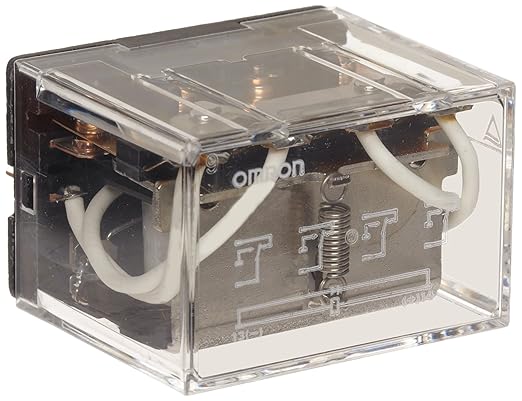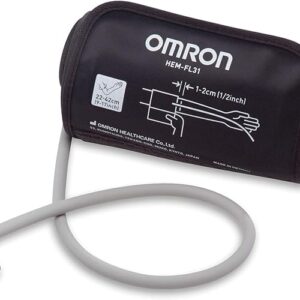Description
Here’s a detailed Pros and Cons Q&A for the Omron LY4-D DC24 General Purpose Relay:
🔧 Product Overview:
- Model: Omron LY4-D DC24
- Type: General Purpose Electromechanical Relay
- Coil Voltage: 24 VDC
- Coil Current: Approx. 69 mA
- Contact Configuration: 4PDT (Quadruple Pole Double Throw)
- 4 Form C contacts
- Mounting: Plug-in (with optional socket) or solder terminal
- Surge Suppression: Built-in Diode for reverse polarity protection and arc suppression
- Typical Use: Industrial control panels, automation systems, motor control, lighting circuits
✅ Pros:
- Built-in Diode for Surge Suppression
- Provides protection against voltage spikes when the coil is de-energized, which is essential for DC circuits to prevent damage to sensitive control electronics.
- Versatile 4PDT Contact Configuration
- Offers four double-throw switches in one relay, allowing control of multiple circuits simultaneously—ideal for complex switching logic or redundant systems.
- Plug-in or Solder Terminal Options
- Supports easy replacement via socket or permanent soldering depending on design needs. Makes maintenance or testing faster and more flexible.
- Reliable Omron Build Quality
- Known for long mechanical and electrical life, Omron relays are used globally in mission-critical industrial applications.
- Standardized Bracket Mounting
- Can be DIN rail or panel mounted (depending on socket/bracket used), making integration into standard control enclosures straightforward.
- Clear Contact Isolation
- 4PDT structure provides high isolation between outputs, improving safety and reducing the chance of electrical interference.
- Wide Range of Compatible Sockets and Accessories
- Easily paired with P2RF series sockets or relay modules to simplify wiring, mounting, and replacement.
❌ Cons:
- Mechanical Wear Over Time
- As an electromechanical relay, it is subject to contact wear and coil fatigue over thousands to millions of cycles—less suitable for very high switching frequencies.
- Limited Switching Speed
- Switching speed is slower than solid-state relays (typically 10–20 ms), making it unsuitable for high-speed automation tasks.
- Needs External Flyback Consideration in Some Circuits
- Although it has a built-in diode, care must still be taken with how the circuit handles inductive kickback, especially when used with PLC outputs.
- Bulky Size for Compact Applications
- The 4PDT configuration means a larger form factor, which might be overkill or too large for space-constrained enclosures.
- Not Suitable for AC Coil Applications
- This specific model is DC24 only—won’t function in AC control systems unless a separate AC version is selected.
- No Built-in Indicator or Test Button (Model-dependent)
- Some variants lack LED indicators or manual test levers, which can make diagnostics or troubleshooting more difficult without external tools.
❓ Q&A – Practical Use Considerations
Q1: What does the “-D” mean in LY4-D?
🔹 It indicates that the relay includes a built-in diode across the coil for surge suppression (flyback protection). Essential for DC control systems.
Q2: Can I use this relay to switch 230V AC loads?
🔹 Yes, as long as the contacts are rated for the voltage and current. Check datasheet for specific contact ratings (usually around 10A at 250V AC).
Q3: Can it be used directly with PLC digital outputs?
🔹 Yes, but check the PLC output rating (24 VDC, 100 mA typical) to ensure it can drive the 69 mA coil current. Also, verify polarity due to the internal diode.
Q4: How many operations can this relay perform?
🔹 Mechanical life is typically millions of operations; electrical life depends on load type—e.g., resistive loads will give much longer life than inductive.
Q5: Is socket mounting necessary?
🔹 Not mandatory, but highly recommended for ease of maintenance, especially in control panels. Use Omron P2RF sockets for compatibility.
🧩 Ideal Applications:
- Motor control circuits
- Multi-circuit switching
- HVAC systems
- Lighting automation
- Signal routing and interlocking systems
- Industrial equipment where multiple outputs need to be switched in sync
✅ Summary:
The Omron LY4-D DC24 is a rugged and versatile general-purpose relay ideal for multi-circuit control in DC-powered systems. With a 4PDT configuration, diode surge suppression, and standard mounting options, it offers excellent control flexibility, safety, and long-term reliability.
However, it’s not designed for high-speed or compact applications, and its mechanical contacts mean it’s not ideal for extremely frequent switching compared to solid-state relays.




Reviews
There are no reviews yet.